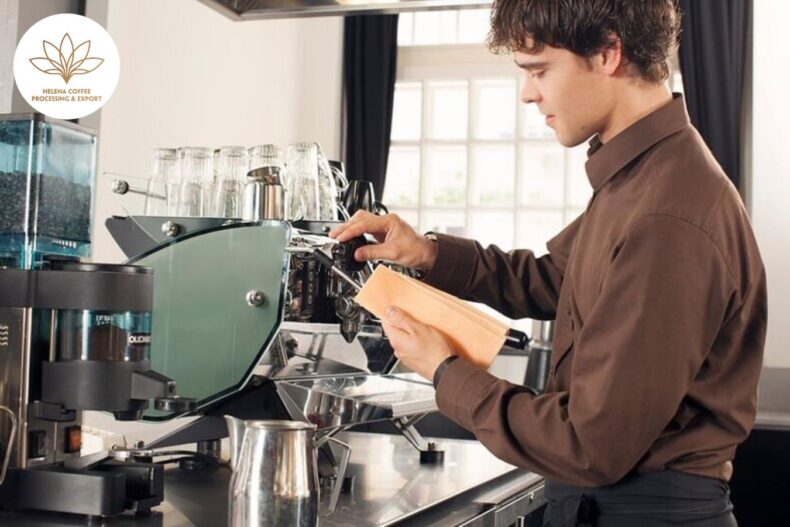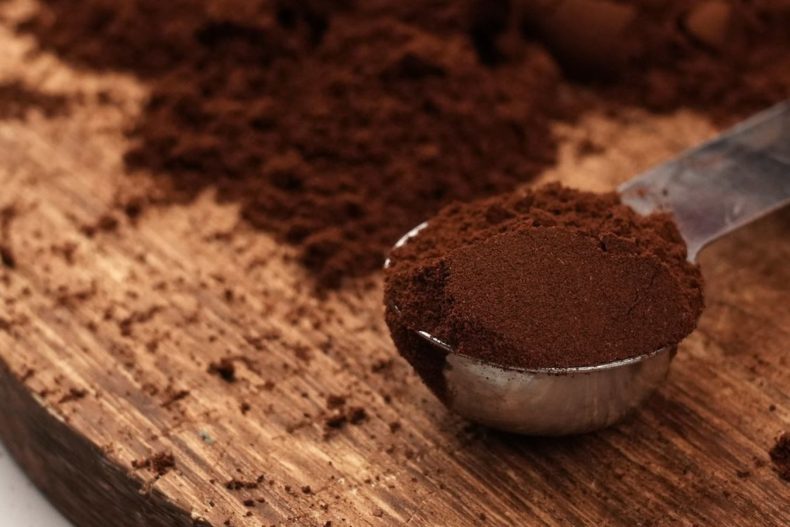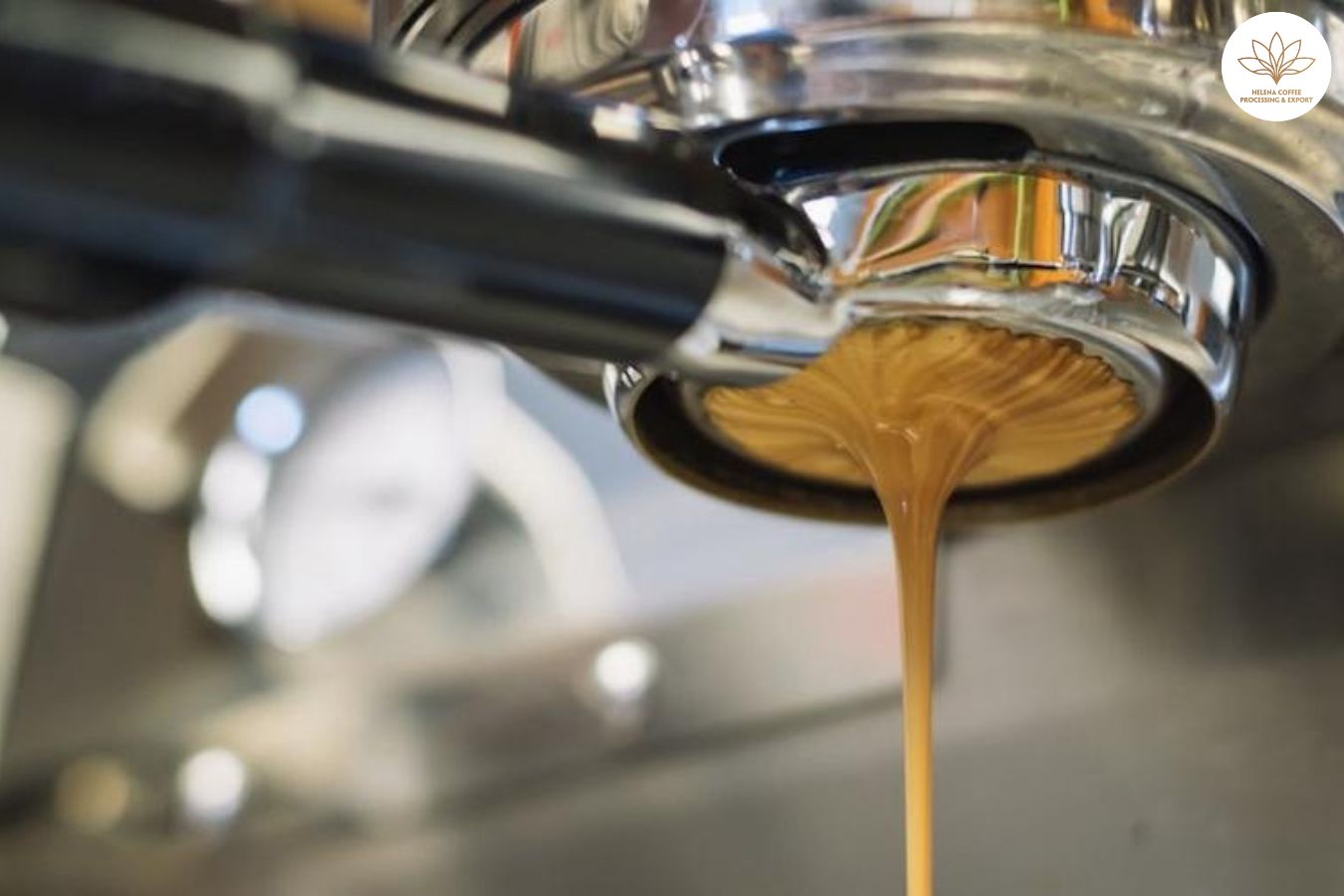
Why Are Distribution and tamping so important for espresso? When pthe importance of propereparing high-quality espresso, baristas must carefully control variables like dose, yield, time, grind size, and water temperature. However, r preparation techniques – distribution and tamping – is sometimes overlooked for elevating espresso.
According to many coffee professionals, executing these techniques correctly can transform a good espresso into an excellent one.
To learn more about these vital but underrated aspects of espresso preparation, I spoke with Wesley Farnell, CEO of Eight Ounce Coffee, and Heo JaePil, Roasting Lab Manager at CoffeeMeUp. Continue reading for their insights.
This article builds on our previous exploration of how channelling affects espresso extraction. Proper distribution and tamping are critical for optimizing espresso quality.
In summary, while dose, yield, time, grind, and temperature are fundamental, mastering distribution and tamping techniques can further elevate espresso to excellence. Read on to learn from industry experts.
WHAT IS DISTRIBUTION AND WHY IS IT SO IMPORTANT FOR EXCELLENT ESPRESSO?
Here is one way to rewrite the paragraph for improved flow and clarity:
Before tamping coffee grounds for espresso, baristas must distribute them evenly in the portafilter basket. Distribution techniques disperse the grounds uniformly, creating a consistent bed for ideal extraction.
Common distribution methods include:
- Tapping the portafilter to settle grounds
- The “NSEW” technique of pushing grounds around with a finger
- The Stockfleth method of rotating the portafilter against a finger
- Stirring with needles or utensils like the Weiss Distribution Technique
Distribution also breaks up clumps, which can hinder extraction. As Heo explains, “Clumps from static buildup in grinders must be broken up to evenly extract espresso.”
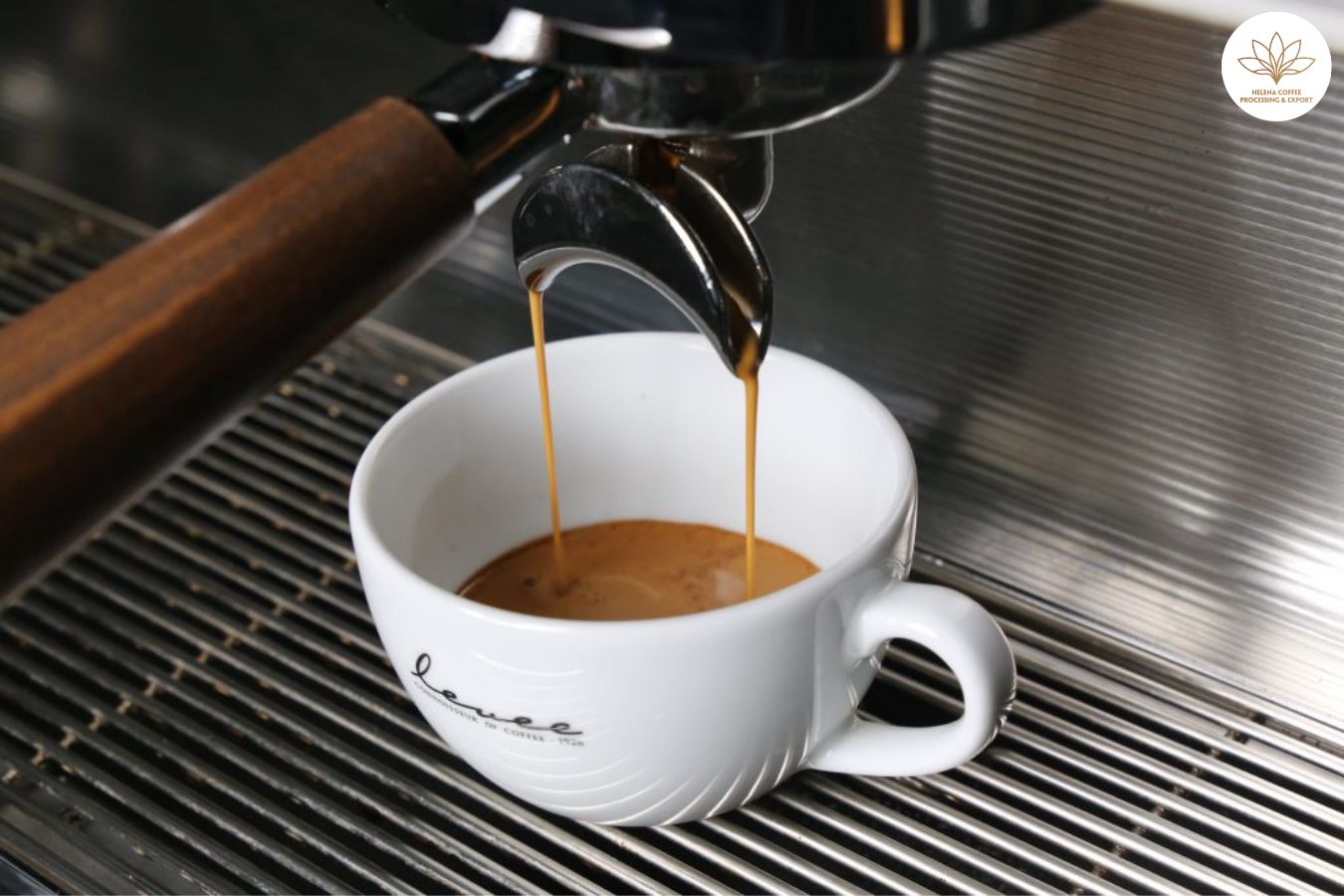
Even density is critical, notes Wesley: “Ground density affects water flow through the puck, significantly impacting taste and quality.”
Uneven distribution creates varying density, inhibiting extraction. Proper distribution creates a uniform bed of grounds by dispersing and declumping, allowing water to extract espresso optimally. This elevates quality and flavor.
In summary, distribution techniques are vital preparatory steps before tamping and extraction. By evenly distributing ground coffee in the portafilter basket, baristas can achieve a consistent density for superior espresso.
How does channelling happen?
Here is one way to rewrite the paragraph for improved flow and clarity:
Uneven distribution can lead to channeling – when water flows through the path of least resistance in the coffee puck, avoiding denser areas.
Instead, water extracts from less dense parts of the coffee bed. This results in simultaneously under and overextracted coffee.
As Wesley explains, “Proper distribution prevents channeling by ensuring water flows evenly through the entire coffee bed. This allows even extraction of flavors and aromas from all ground particles, creating a well-balanced, flavorful espresso.”
In summary, inconsistent distribution causes variable density, leading to channeling. Water follows the path of least resistance, creating uneven extraction. Proper distribution promotes uniform density and water flow, extracting evenly across the coffee bed for balanced, flavorful espresso.
Why is the Weiss Distribution Technique so popular?
Here is one way to rewrite the paragraph for improved flow and clarity:
The Weiss Distribution Technique (WDT) using specialized tools is arguably the most popular distribution method currently. WDT evenly distributes grounds from top to bottom and side to side, improving espresso consistency and quality.
As Wesley explains, “WDT has become popular among specialty baristas because it helps enhance the consistency and quality of espresso.”
Heo notes WDT is often more effective than other tools that just distribute the upper grounds layers. The multiple needles of WDT tools thoroughly distribute the entire coffee bed.
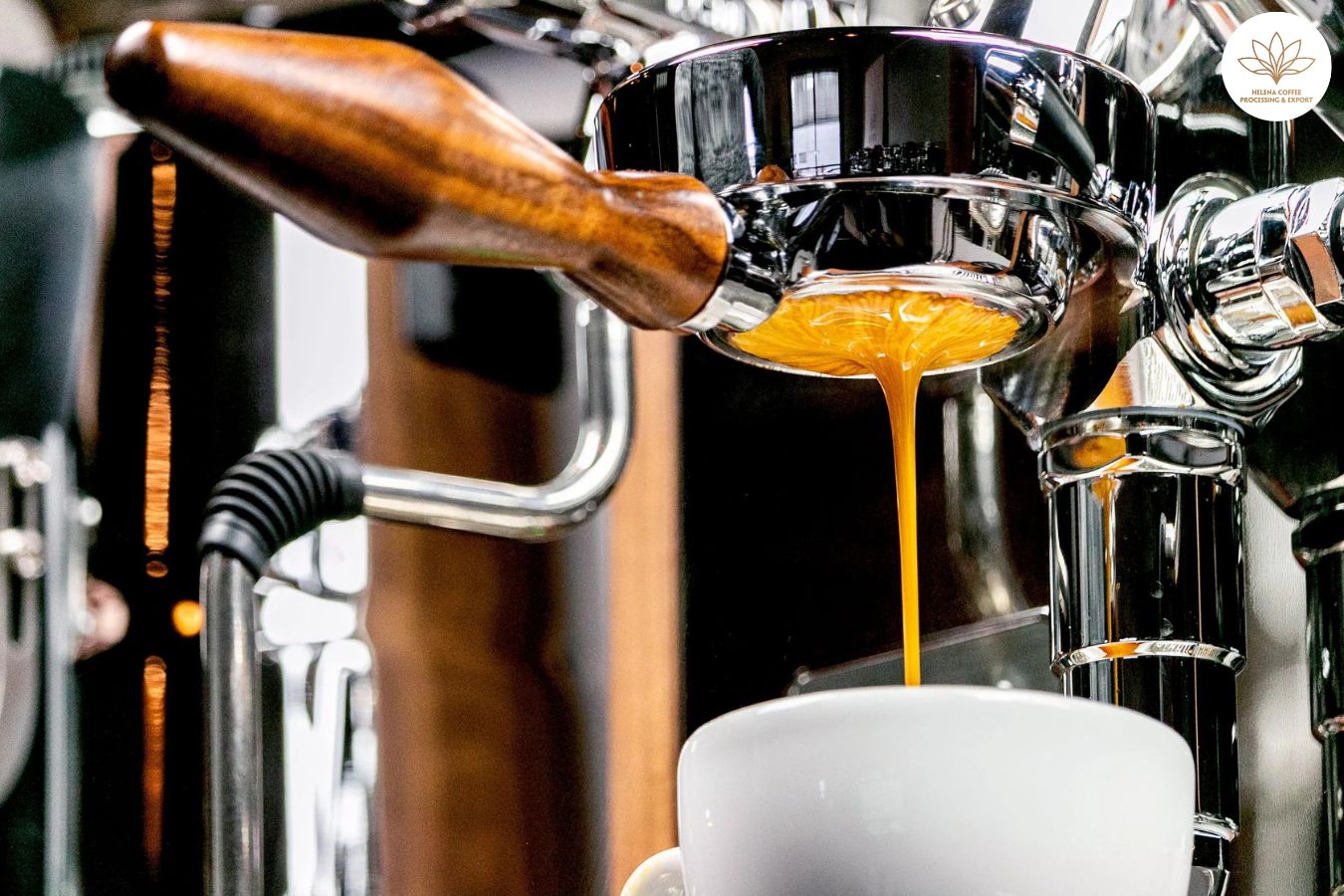
A key benefit of WDT is increased shot consistency. Even particle distribution allows for more repeatable, consistent extraction and flavor profiles.
WDT is especially helpful with lighter roasts and single origins prone to channeling, says Wesley. Heo adds that it can increase extraction yield for light roasts, extracting more flavors.
In summary, the Weiss Distribution Technique thoroughly distributes coffee grounds using specialized tools, improving full extraction and shot consistency. This makes it a popular method among specialty baristas striving for quality.
WHY IS TAMPING ALSO ESSENTIAL FOR PULLING HIGH-QUALITY ESPRESSO SHOTS?
Here is one way to rewrite the paragraph for improved flow and clarity:
Proper tamping is also crucial for excellent espresso preparation after distribution. Tamping compresses the coffee grounds, creating resistance and optimizing extraction.
As Heo explains, “Tamping creates back pressure against water flow, helping prevent channeling. It also provides headspace to prevent the puck cracking from touching the grouphead.”
However, uneven tamping can cause inconsistent extraction and flavor loss.
“If grounds aren’t tamped evenly, water may flow unevenly through the puck, leading to poor extraction and espresso quality,” notes Wesley.
In summary, tamping is vital for building resistance, preventing cracks and channeling, and promoting even extraction. With proper technique, tamping transforms distributed grounds into an ideal extraction medium. Uneven tamping causes inconsistent flow and subpar flavor. Mastering tamping is key for any barista seeking excellence.
WHY IS IT SO IMPORTANT FOR BARISTAS TO INVEST IN HIGH-QUALITY DISTRIBUTION AND TAMPING EQUIPMENT?
Here is one way to rewrite the paragraph for improved flow and clarity:
While proper tamping technique is essential, using quality equipment like Duomo’s tools can further elevate espresso.
As Wesley advises, “Investing in high-end distribution and tamping tools improves the quality and consistency of espresso shots.”
Duomo’s WDT tool, the Eight, was used by competitors in the 2022 World and National Barista Championships.
Wesley details using the Eight: “After dosing and tamping, place it on the portafilter basket. Push down and turn the top handle, alternating directions in 5 turns. Remove and clean the needles if needed.”
Meanwhile, Duomo’s Tamper, a 2-in-1 WDT and tamper tool, won the 2022 SCA Best New Product Award. Its 8 needles distribute grounds before its tamper slides over to tamp precisely. As Wesley explains, this achieves an even tamp and accurate pressure control, crucial for high-quality espresso.
In summary, while technique is key, using innovative tools like Duomo’s can optimize distribution and tamping. This takes espresso excellence to the next level through enhanced consistency, extraction, and flavor.
Benefits of using WDT tools and tampers for espresso
Here is one way to rewrite the paragraph for improved flow and clarity:
Using quality WDT tools and tampers offers clear benefits for espresso preparation:
As Wesley states, “With high-end distribution and tamping equipment, baristas work more efficiently and effectively. They can pull consistent, quality shots faster, even when busy.”
He adds, “Quality equipment also lasts longer, needing fewer repairs or replacements. This saves money long-term.”
Adjustable needles suit various portafilter depths, and individual needle replacement enables repairs as needed.
In summary, investment in innovative distribution and tamping tools like Duomo’s promotes efficiency, consistency, cost savings, and sustainability. By enhancing workflow and espresso excellence, quality tools empower baristas to perform at their peak.
Tips for using these tools
Here is one way to rewrite the paragraph for improved flow and clarity:
While around 30 lbs of force is recommended for tamping, consistent pressure matters more than exact force. With repetitive tamping motions, baristas also risk repetitive strain injuries (RSI).
As Wesley notes, “Duomo’s ergonomic Tamper and Eight minimize RSI risk through comfortable, easy-to-use designs.”
Heo offers tips for optimizing distribution and tamping:
“Relax your wrist and don’t rush. Memorize your techniques and taste each shot, noting flavor changes from adjustments. Only through understanding the process and ample practice will you achieve great results.”
In summary, consistent, even pressure enables proper tamping more than precise force. Well-designed tools like Duomo’s reduce injury risks from repetitive motions. Mastering preparation techniques requires patience, mindful practice, and tasting to understand extraction effects. With dedication to consistency and ongoing learning, baristas can elevate espresso excellence.
FAQS:
- The Importance of Distribution and Tamping So Important For Quality Espresso
- How To Descale An Espresso Machine: Ensuring The Well-Being OF Your Espresso Machine
- Manual Espresso Machines: The Art of Crafting the Ideal Shot
